Cenotaph for the forgotten Indian soldiers is a reminder of shared sacrifices
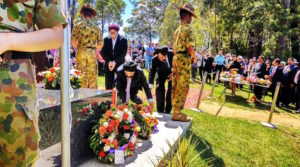
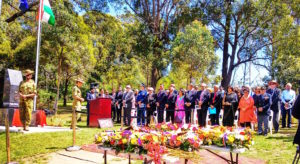
By Neena Badhwar
Hindu Council of Australia’s volunteers – Bhagwat Chauhan, Sanjeev Bhakri, Ashwani Jain, Parveen Gupta, Rajeev Maini, Vijay Badhwar and others stayed away from the limelight at the unveiling of the Cenotaph on November 10 on the Centenary of Armistice, recognising the service of Indian soldiers in WWI, but they were proud to be part of the team that had created the first memorial truly shared by India and Australia. One hundred years ago on 11 November 1918, four bloody years of brutal conflict came to an end when the World War 1 ended. Indian soldiers’ sacrifices in WW I have been overlooked and the unveiling of Cenotaph erected in Cherrybrook was an overwhelming and emotional reminder and experience for all who attended.
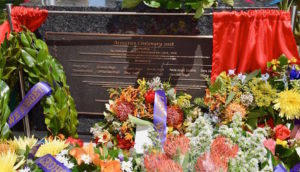
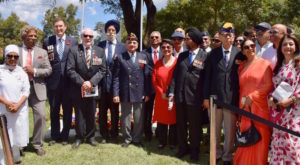
It was when the Federal Member for Berowra, Julian Leeser, first suggested the idea of a memorial for Indian soldiers’ who were part of the Allied forces, the Hindu Council enthusiastically responded to it although they knew nothing what the project actually had involved. But their earlier apprehensions seemed baseless as it turned out to correspond in soul and spirit a memorial to Indian soldiers in an area (Cherrybrook) that is representative of a thriving Indian community.
According to architect Rajeev Maini, the stone plinth represents the high esteem we have for our brave Jawans; the vertical stone representing soldiers standing tall and firm in defending the nation and the missing piece being for the lives cut short.
“The floral decoration at the bottom of the tall stone is an offering of community gratitude for the Jawans, 12 flowers carved around the base representing the 12 brave souls whose names are immortalised on the cenotaph made in granite, imported from India to represent their connection with India,” Rajeev says.
The ceremony on the beautiful Saturday morning was solemn affair with bagpipes from Hornsby RSL playing in the background and young scouts standing respectfully at the four corners of the Cenotaph.
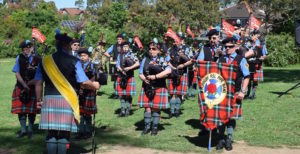
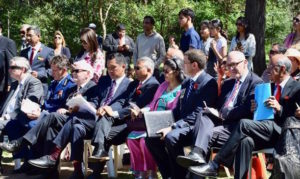
There were many dignitaries: Indian High Commissioner Dr A M Gondane and Consul General in Sydney, Mr Vanlalvawna, Federal Member for Berowra, Julian Leeser, Terry James, President of Hornsby RSL Sub-Branch, Prakash Mehta, President, Hindu Council of Australia.
Mr Mehta said, India, in both World Wars, had been on the side that was good for humanity. “The memorial links new generation Indians as a reminder to the 100-year-old connection,” he said.
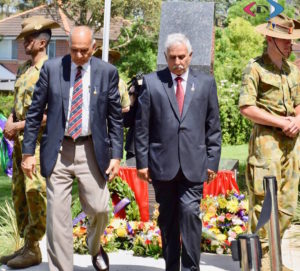
Mr Leeser unveiled the memorial, dedicating it to the memory of Indian soldiers who had lost their lives and also served as a reminder that India and Australia had marched together for a common cause. Indian soldiers came from diverse backgrounds in the war effort, and were discriminated and had to overcome prejudices. But their effort is a source of pride to the Indian community that they share a part of the story, he said.
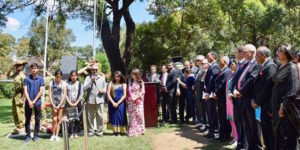
The High Commissioner observed the memorial as an epitome of what India did in the past, is doing now and will do in service of freedom and liberty.
Around one and a half a million Indian soldiers were deployed in World War I by the Imperial Army to go fight in the Palestine, Turkey and Syria and other places. In total, 74,187 Indian soldiers died during the war. Indian soldiers fought against the German Empire in German East Africa and on the Western Front. Indian divisions were also sent to Egypt, Gallipoli and nearly 700,000 served in Mesopotamia against the Ottoman Empire.
According to historians around 15,000 professional Indian soldiers fought with allied troops at Gallipoli, about 1400 dying there and 3,000 wounded. The 29th Brigade was the mountain artillery brigade also there was the well known Mule Corp which carried supplies to troops through Mule Gully that came under constant machine fire.

Australians and Indians fought at Gallipoli side by side and the photographs of their time with the Anzacs show how they shared their foods as Aussie soldiers preferred the Indian roti and daal prepared in trenches by the Indians over the salted beef and biscuits. The records are missing in India as much was lost during the India Pakistan partition in 1947 only a plaque reminding of the Indian soldiers sacrifices in WWI in Ferozepur hospital. Those are the forgotten soldiers of India under the British in whose memory High Commissioner Gondane said that the Cenotaph in Cherrybrook will remind everyone, not just the Indians but general public as well, who will visit this important spot that honours the contribution made by Indian soldiers, he quoted, that the Cenotaph will become a place for remembering their sacrifice with ”˜Shaheedon ki chitaon par lagenge har varash mele, watan par marne walo ka yahi namo nishan hoga,’ “It will become an important place of visit and a reminder that India sacrificed its forces along with others and fought shoulder to shoulder for liberty and world peace.”

Twelve Indian soldiers whose names are inscribed on the plaque that was unveiled by Julian Leeser are: Davy Singh, Dasanda Singh, Ganessa Singh, Gurbachan Singh, Johar Singh, Juwan Singh, Linna Singh, Nain Singh Sailani, Nundah Singh, Sarn Singh and Sirdar Singh. The ceremony was a solemn time to commemorate and honour many brave soldiers of India who lost their lives in World War I along with the twelve remembered on the day by people who came to watch the ceremony on a sunny day with Terry James, AICM JP, President Hornsby RSL Sub-Branch reciting the Ode: ”˜They shall not grow old as we that are left grow old; Age shall not weary them, nor the years condemn. At the going down of the sun and in the morning, We will remember them.’
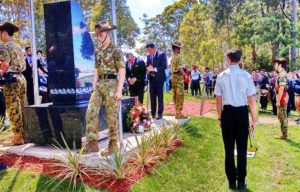
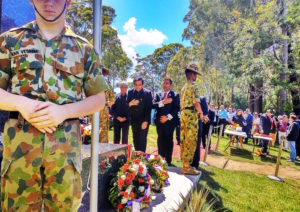
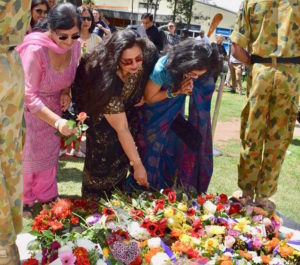
There were wreaths laid by the army, police personnel, many community organisations and later by individuals who paid tribute to the Anzac Jawans who had sacrificed their lives for global freedom.
Pics: Harmohan Walia and Neena Badhwar
Short URL: https://indiandownunder.com.au/?p=11993
